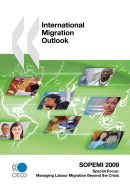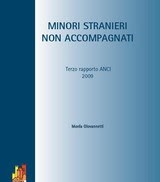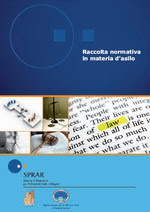The chief
purpose of the European Union's Dublin Regulation—adopted as the first
element of the new Common European Asylum System (CEAS) in 2003 and
recast in 2013—is to act as a mechanism that swiftly assigns
responsibility for processing an individual asylum application to a
single Member State. It seeks to ensure quick access to protection for
those in need while discouraging abuses of the system by those who would
"shop" for the Member State with the most favorable asylum practices or
reception conditions. As long as separate national asylum systems exist
within a European area without internal border controls, Dublin—or a
mechanism like it—will remain a necessary element of any European
approach to asylum.
However, as implemented, the Dublin system is largely failing to achieve its two primary goals. Low effective transfer rates and a persistently high incidence of secondary movement among asylum seekers have undermined the efficiency of the Dublin system. In addition, asylum advocates have criticized Dublin for procedural delays in the evaluation of protection claims, which may disrupt family unity and put vulnerable individuals at risk. Crucially, the regulation does not recognize or address the main factor underlying the Dublin system's problems: despite the harmonization efforts of the CEAS, essential differences remain in the asylum procedures, reception conditions, and integration capacity of EU Member States. These differences invalidate Dublin's core assumption that asylum applicants will receive equal consideration and treatment regardless of where they submit their claims.
This report examines the key criticisms of the Dublin system as it stands now, with special attention to those that address the efficient operation of the European asylum system and the ability of applicants to quickly access asylum procedures and protection. The report then evaluates the potential of the recently adopted recast of the Regulation (Dublin III), and concludes by recommending several topics for consideration during the European Commission’s scheduled 2016 review of the Dublin system.
However, as implemented, the Dublin system is largely failing to achieve its two primary goals. Low effective transfer rates and a persistently high incidence of secondary movement among asylum seekers have undermined the efficiency of the Dublin system. In addition, asylum advocates have criticized Dublin for procedural delays in the evaluation of protection claims, which may disrupt family unity and put vulnerable individuals at risk. Crucially, the regulation does not recognize or address the main factor underlying the Dublin system's problems: despite the harmonization efforts of the CEAS, essential differences remain in the asylum procedures, reception conditions, and integration capacity of EU Member States. These differences invalidate Dublin's core assumption that asylum applicants will receive equal consideration and treatment regardless of where they submit their claims.
This report examines the key criticisms of the Dublin system as it stands now, with special attention to those that address the efficient operation of the European asylum system and the ability of applicants to quickly access asylum procedures and protection. The report then evaluates the potential of the recently adopted recast of the Regulation (Dublin III), and concludes by recommending several topics for consideration during the European Commission’s scheduled 2016 review of the Dublin system.
Table of Contents
I. Introduction
II. Back to the Basics: Dublin's Founding Principles
The Necessity of the Dublin System
III. Not Measuring Up: Evaluating the Efficiency of the Dublin System
A. An Uneven Burden
B. Actual Transfer Rates Are Low
C. Member States Often Exchange Similar Numbers of Requests
D. Secondary Movement and 'Asylum Shopping' Remain Issues
E. Costs
IV. Dublin's Unintended Consequences: Access to Protection and Other Impacts
A. Disruption of Family Unity and Risks to Vulnerable Individuals
B. Delayed Access to Asylum Procedures
C. Detention
D. Access to Protection after Transfer
E. Other Risks
V. Where to from here?
A. Evaluating the Promise of Dublin III
B. A Rocky Road Ahead
VI. Conclusions and Recommendations
II. Back to the Basics: Dublin's Founding Principles
The Necessity of the Dublin System
III. Not Measuring Up: Evaluating the Efficiency of the Dublin System
A. An Uneven Burden
B. Actual Transfer Rates Are Low
C. Member States Often Exchange Similar Numbers of Requests
D. Secondary Movement and 'Asylum Shopping' Remain Issues
E. Costs
IV. Dublin's Unintended Consequences: Access to Protection and Other Impacts
A. Disruption of Family Unity and Risks to Vulnerable Individuals
B. Delayed Access to Asylum Procedures
C. Detention
D. Access to Protection after Transfer
E. Other Risks
V. Where to from here?
A. Evaluating the Promise of Dublin III
B. A Rocky Road Ahead
VI. Conclusions and Recommendations




















Nessun commento:
Posta un commento